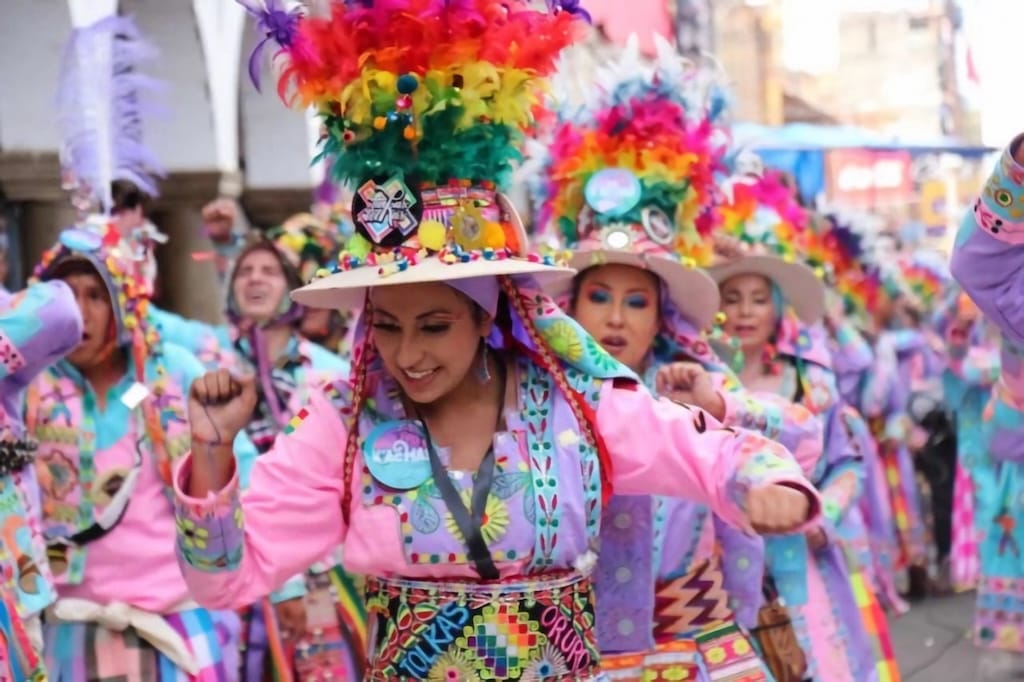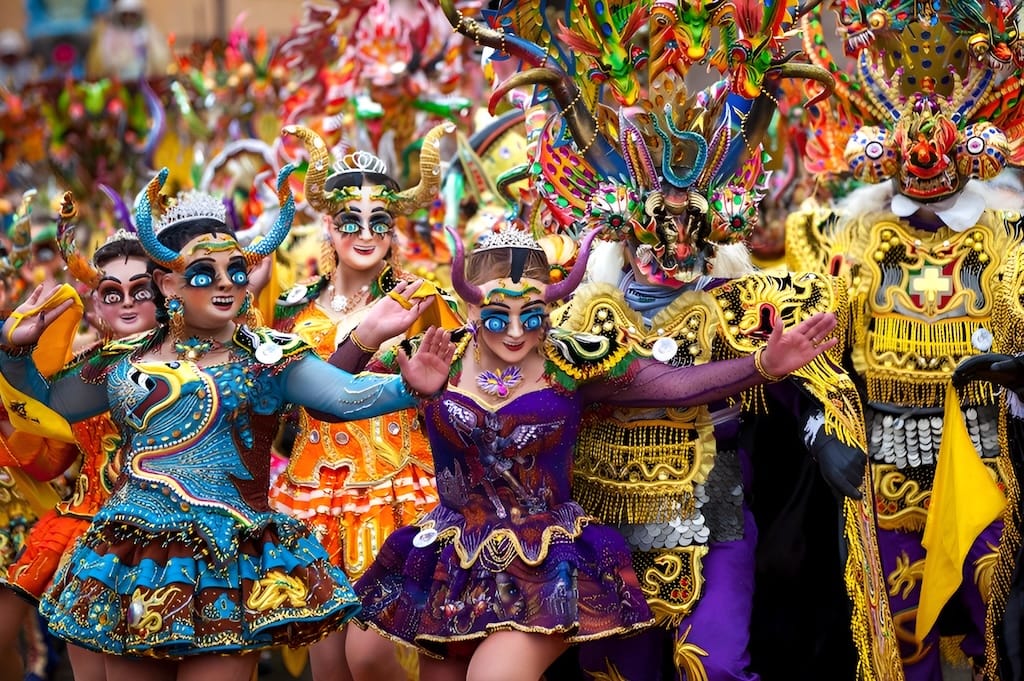
Oruro Carnival, Bolivia: A Cultural Extravaganza
The Oruro Carnival is one of the most fantastic and culturally important festivals in South America. Celebrated annually in the town of Oruro, Bolivia, it represents a dramatic fusion of indigenous traditions with Catholicism.
The elaborate costumes, energetic dances, and rich cultural heritage make this carnival a major tourist attraction, drawing thousands of visitors eager to experience its vibrant atmosphere. In this article, we will explore the history of the event, what people usually do, traditional customs, and other interesting facts that make the Oruro Carnival an unmissable experience.
History of the Event
The origins of the Oruro Carnival date back to pre-Columbian times, when the indigenous Uru people celebrated their deities with colorful rituals and dances. With the arrival of the Spanish and the introduction of Catholicism, these indigenous traditions were blended with Christian elements, creating a unique fusion of cultures.
The Oruro Carnival, as we know it today, began in the early 18th century. According to legend, the Virgin of the Mineshaft—another name for the Virgin of Socavón—appeared to a thief named Anselmo on the day he died, thus instituting the carnival in her honor.


This event led to the tradition of honoring the Virgin through elaborate parades and dances. In 2001, UNESCO declared the Oruro Carnival a Masterpiece of the Oral and Intangible Heritage of Humanity, recognizing its cultural significance and historical importance.
What People Usually Do
The Grand Parade
The Entrada is the climax of the Oruro Carnival; it is a grand parade that unfolds over two days. More than 48 dance groups participate, featuring thousands of dancers and musicians who perform typical Bolivian dances such as the Diablada, Morenada, and Caporales. The parade starts early in the morning and continues well into the night, with participants wearing sophisticated costumes to represent specific cultural or historic themes.
Folkloric Dances
The Diablada is one of the most representative performances during the Oruro Carnival. Dancers don detailed devil costumes and masks to depict the battle between good and evil, symbolizing the triumph of the Archangel Michael over the devil.
The Morenada is a slow dance characterized by rhythmic movements and colorful costumes adorned with feathers and beads, representing the African slaves brought to Bolivia during the colonial period. The Caporales is a more contemporary style added to the carnival, featuring energetic steps and fashionable costumes that reflect a traditional dance of the same name.
Religious Ceremonies
Religious ceremonies are integral to the Oruro Carnival. After the parade, participants embark on a pilgrimage to the Shrine of the Virgin of Socavón, where they attend mass and offer prayers.
The Diablada dance is performed as a tribute to the Virgin, and many dancers carry images of the Virgin or other religious symbols during the parade. The carnival also includes the Anata Andina, a celebration of indigenous culture and traditions, where participants give thanks to Pachamama (Mother Earth) for the harvest.
Music and Performances
Music is a central element of the Oruro Carnival. Dance groups are accompanied by traditional Bolivian bands, known as bandas, which play lively tunes on brass instruments, drums, and flutes. The vibrant sounds of the bandas add to the festive atmosphere, providing a rhythmic backdrop for the dancers. In addition to the grand parade, the carnival features various performances, including theater shows, street performances, and concerts.
Traditional Customs
Costumes and Masks
Costumes and masks are a crucial aspect of the Oruro Carnival. Dancers spend months preparing their elaborate outfits, which are often handmade and adorned with intricate details such as sequins, beads, and feathers.
The devil masks worn by Diablada dancers are particularly striking, featuring exaggerated features and vibrant colors. These costumes not only enhance the visual spectacle of the carnival but also allow participants to express their cultural heritage.
Ch'alla Ceremony
The Ch'alla is a traditional ritual performed during the Oruro Carnival. Participants sprinkle alcohol, confetti, and flowers around their homes and businesses to bless their properties and attract good fortune for the coming year. This ceremony is a way to give thanks to Pachamama and seek her blessings for prosperity and protection.
Food and Drink
The Oruro Carnival is also a time to enjoy traditional Bolivian food and drink. Visitors can sample a variety of local dishes, such as salteñas (a type of empanada filled with meat and vegetables), pique macho (a spicy meat and potato dish), and api (a warm, sweet corn-based drink). These culinary delights add to the overall experience of the carnival, providing a taste of Bolivian culture.
Interesting Facts
- The Oruro Carnival attracts over 400,000 visitors each year, making it one of the largest and most popular festivals in South America.
- The carnival features over 18,000 dancers and 10,000 musicians, showcasing a diverse range of traditional Bolivian dances and music.
- The Diablada dance, which is the centerpiece of the carnival, is believed to have originated in the mining town of Oruro as a way to honor the Virgin of Socavón and ward off evil spirits.


Tips for Visitors
Plan Ahead
The Oruro Carnival is a major event, and accommodations can fill up quickly. It is advisable to book your hotel well in advance and plan your trip to ensure you have the best experience.
Dress Comfortably
The carnival involves a lot of walking and standing, so it is important to wear comfortable shoes and clothing. The weather in Oruro can be unpredictable, so be prepared for both hot and cold conditions.
Respect Local Customs
The Oruro Carnival is a deeply religious and cultural event, so it is important to show respect for local customs and traditions. Be mindful of your behavior, especially during religious ceremonies and performances.
Conclusion
The Bolivian Oruro Carnival is one of the brightest cultural, traditional, and communal events, combining its rich history with fancy costumes and energetic dances to create a unique and unforgettable experience for guests.
Whether you're drawn to the religious aspects, the colorful processions, or the lively music, the Oruro Carnival has something for everyone. Plan your visit to Bolivia and immerse yourself in the magic and excitement of this extraordinary festival.